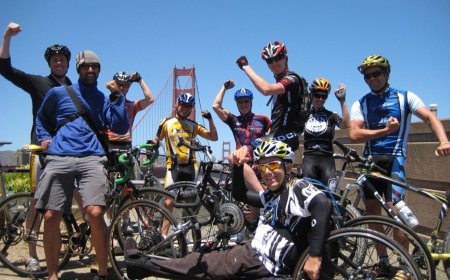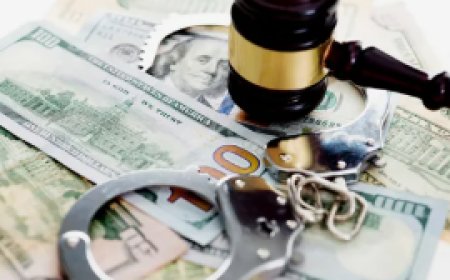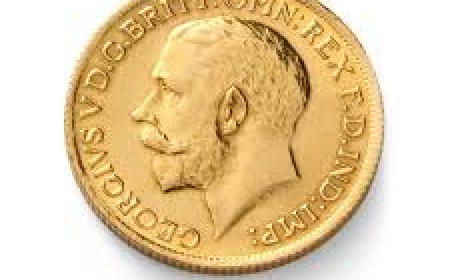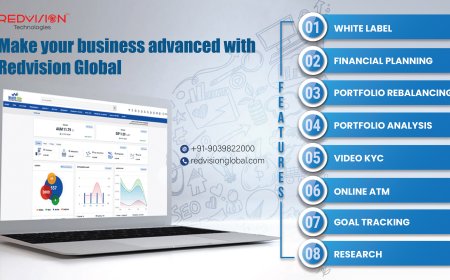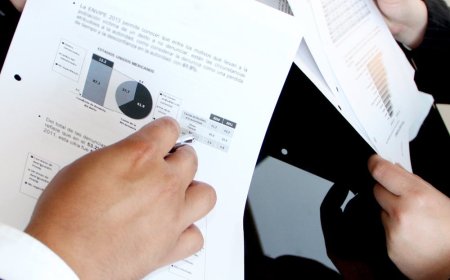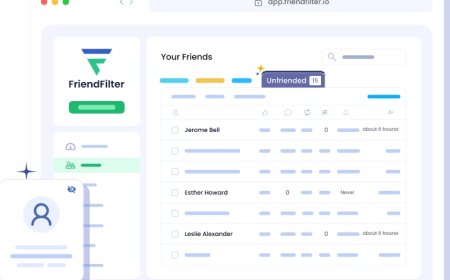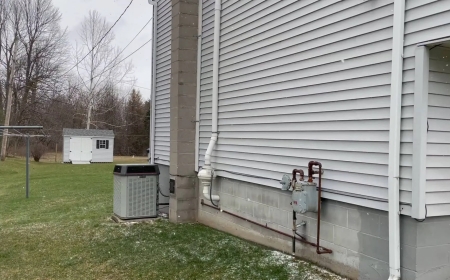How To Attend Dallas Arts Month Free Events
How to Attend Dallas Arts Month Free Events Dallas Arts Month is more than just a calendar event—it’s a city-wide celebration of creativity, expression, and community. Held annually in March, this initiative transforms Dallas into an open-air gallery, theater, and performance space, offering hundreds of free cultural experiences to residents and visitors alike. From outdoor sculpture walks and pop
How to Attend Dallas Arts Month Free Events
Dallas Arts Month is more than just a calendar event—it’s a city-wide celebration of creativity, expression, and community. Held annually in March, this initiative transforms Dallas into an open-air gallery, theater, and performance space, offering hundreds of free cultural experiences to residents and visitors alike. From outdoor sculpture walks and pop-up poetry readings to free museum admissions and live music in public plazas, Dallas Arts Month democratizes access to the arts, removing financial barriers that often limit participation. Whether you’re a longtime Dallas resident or a first-time visitor, knowing how to navigate and fully engage with these free events can enrich your understanding of the city’s cultural heartbeat. This guide provides a comprehensive, step-by-step roadmap to attending Dallas Arts Month free events with confidence, efficiency, and deep cultural appreciation.
Step-by-Step Guide
Attending Dallas Arts Month free events requires more than just showing up—it demands planning, awareness, and strategic timing. Follow these seven detailed steps to ensure you maximize your experience without missing out on key opportunities.
Step 1: Understand the Scope and Schedule
Dallas Arts Month is not a single event but a curated series of over 500 free activities hosted by more than 150 cultural institutions, independent artists, and community organizations. Events range from guided tours at the Dallas Museum of Art to sidewalk chalk festivals in Deep Ellum, from silent film screenings in Klyde Warren Park to spoken word nights in Oak Cliff. The first step is to recognize the diversity and scale of offerings.
Begin by visiting the official Dallas Arts Month website (dallasartsmonth.org). The site hosts a dynamic, searchable calendar that filters events by date, neighborhood, art form (visual arts, music, theater, dance, literature, etc.), and accessibility features. Bookmark this page early in February, as the full calendar typically launches in late January. Print or save a digital copy to your phone for offline access.
Step 2: Identify Your Interests and Prioritize
With so many options, it’s easy to feel overwhelmed. Instead of trying to attend everything, narrow your focus based on personal interests. Ask yourself: Do you prefer quiet contemplation in galleries, or the energy of live performance? Are you drawn to contemporary installations, historical exhibitions, or community-driven murals?
Make a shortlist of three to five event categories that excite you most. For example:
- Visual Arts: Sculpture gardens, gallery openings, public murals
- Performing Arts: Free theater, dance recitals, jazz ensembles
- Literary Arts: Poetry slams, author readings, book swaps
- Family-Friendly: Interactive art stations, kids’ workshops
- Neighborhood-Specific: Events in Uptown, Deep Ellum, Oak Cliff, or East Dallas
Use this list to filter the online calendar. Save events to your personal digital calendar (Google Calendar, Apple Calendar, etc.) with reminders set 24 hours in advance.
Step 3: Check Event Details and Requirements
While all events are free, some have logistical requirements that can impact your attendance. Always read the full event description before committing. Key details to verify include:
- Registration: Some events—especially workshops or limited-capacity tours—require pre-registration, even if they’re free. Missing registration can mean being turned away.
- Location: Events may be held in non-traditional venues: rooftops, parking lots, libraries, or private courtyards. Use Google Maps to confirm exact addresses and parking availability.
- Accessibility: Look for notes on wheelchair access, ASL interpretation, sensory-friendly options, or language accommodations. Most organizers list these details prominently.
- Weather: Outdoor events are weather-dependent. Check for rain policies or rescheduling notices. Many organizers post updates on social media the day before.
- Age Restrictions: While most events are family-friendly, some performances or installations may be intended for mature audiences. Read content advisories carefully.
Pro tip: If an event requires registration, sign up as soon as the calendar goes live. Popular workshops—like ceramic painting at the Nasher Sculpture Center or digital art labs at the Latino Cultural Center—fill up within hours.
Step 4: Plan Your Transportation and Timing
Dallas is a sprawling city, and traffic can be unpredictable. Public transit, rideshares, and biking are often more reliable than driving, especially during weekend events.
Use the DART (Dallas Area Rapid Transit) app to plan routes. Many Arts Month events are located near DART light rail stops or major bus corridors. For example, the Dallas Museum of Art is adjacent to the Cityplace/Uptown station, and the Latino Cultural Center is a short walk from the Westmoreland stop.
Consider carpooling with friends or neighbors to reduce parking stress. If you drive, confirm whether parking is free or paid. Many museums and cultural centers offer complimentary parking during Arts Month, but this is not universal. Always check the event page for parking instructions.
Arrive 15–20 minutes early for popular events. Lines for free admission at the DMA or the Crow Museum can be long, especially on weekends. Early arrival ensures you get a good spot for performances and avoid crowds.
Step 5: Prepare for the Experience
Being prepared enhances your enjoyment and helps you engage more deeply with the art. Pack the following essentials:
- Comfortable footwear: You may walk several miles across multiple venues in one day.
- Reusable water bottle: Stay hydrated, especially during outdoor events in March, when temperatures can rise unexpectedly.
- Light jacket or sweater: Evenings in Dallas can be cool, even in spring.
- Portable charger: Keep your phone powered for navigation, ticket scanning, and photo documentation.
- Small notebook or digital note-taking app: Jot down artists’ names, quotes, or thoughts that resonate with you. This deepens reflection and memory.
- Camera or smartphone: Many events encourage photography—check signage for restrictions. Always ask permission before photographing performers or participants.
For family attendees, bring snacks, small games, or coloring materials for downtime between events. Children’s attention spans vary, and having a backup activity prevents restlessness.
Step 6: Engage Actively During the Event
Passive attendance is not the goal. Dallas Arts Month thrives on interaction. Don’t just observe—participate.
At artist talks, ask thoughtful questions. At hands-on workshops, don’t hesitate to try—even if you’ve never painted or danced before. Many events are designed for all skill levels. At poetry readings, clap, laugh, or whisper “yes” in appreciation. These responses are not just polite—they’re vital to the artist’s experience.
Follow event organizers and artists on Instagram or Facebook. Many share behind-the-scenes content, last-minute changes, or bonus pop-up events not listed on the main calendar. Engaging online can lead to unexpected opportunities.
Consider volunteering at an event. Many organizations welcome helpers for setup, crowd guidance, or table assistance. Volunteering often grants early access, exclusive perks, and deeper connections to the local arts community.
Step 7: Reflect and Share Your Experience
After each event, take five minutes to reflect. What moved you? What surprised you? Did a piece of art change how you saw something in your daily life?
Share your experience on social media using
DallasArtsMonth. Tag the event organizers and artists. Your post might inspire someone else to attend, and artists often notice and appreciate public recognition.
Consider writing a short review on Google or Yelp for the venue or organization. These reviews help sustain funding and visibility for future free programming.
Finally, keep a personal journal or digital folder of your Arts Month experiences. Over time, this becomes a meaningful record of your cultural journey through Dallas.
Best Practices
Attending Dallas Arts Month free events is more than logistics—it’s a mindset. These best practices ensure you respect the art, the artists, and the community while maximizing your personal enrichment.
Practice 1: Respect the Space and the Artists
Art is not just decoration—it’s labor, vulnerability, and intention. Whether you’re in a gallery, a park, or a converted warehouse, treat the space with care. Don’t touch artwork unless explicitly invited. Keep noise levels appropriate. Silence your phone. Avoid blocking views during performances. These small acts of consideration create a respectful atmosphere for everyone.
Practice 2: Support Artists Beyond Attendance
While events are free, artists are not paid by the city alone. Many rely on tips, sales, or donations. If an artist is selling prints, zines, or handmade items, consider purchasing—even a $5 item makes a difference. Leave a note of appreciation. Share their social media handles. If they accept Venmo or Cash App, a small monetary thank-you can be profoundly meaningful.
Practice 3: Explore Beyond the Hype
It’s tempting to focus only on headline events—like the opening night at the DMA or the big concert in Klyde Warren Park. But some of the most powerful experiences are found in smaller, lesser-known venues. A poetry reading in a neighborhood library, a mural tour in Pleasant Grove, or a folk music set in a church basement often offer deeper, more intimate connections. Challenge yourself to attend at least one “hidden gem” each week.
Practice 4: Be Inclusive and Curious
Dallas Arts Month celebrates diversity in every sense—cultural, racial, generational, and ability-based. Approach each event with curiosity, not assumption. Ask questions. Listen more than you speak. If you’re unfamiliar with a cultural tradition being presented, don’t hesitate to say, “I’d love to learn more.” Most artists and organizers are eager to educate.
Practice 5: Avoid Over-Scheduling
It’s easy to fall into the trap of trying to attend five events in one day. But art requires space to breathe—both in the work and in your experience. Allow for transitions, quiet moments, and spontaneous discoveries. A single 90-minute experience can leave a lasting impression. Quality over quantity always wins.
Practice 6: Advocate for Continued Access
Dallas Arts Month exists because of community support. If you value free access to the arts, speak up. Attend city council meetings. Write to local representatives. Support nonprofit arts organizations year-round. The sustainability of free programming depends on public demand and advocacy.
Practice 7: Involve Others
Bring a friend, a coworker, a neighbor, or a child. Art becomes more powerful when shared. Encourage others to join you—not as a chore, but as an invitation to wonder. You might spark someone’s lifelong love for the arts.
Tools and Resources
Successful participation in Dallas Arts Month relies on the right tools and trusted resources. Below is a curated list of digital and physical tools to help you navigate, plan, and deepen your experience.
Official Website: dallasartsmonth.org
This is your primary hub. The site features:
- Interactive event calendar with filters
- Map view of all events by neighborhood
- Artist spotlight interviews
- Downloadable PDF guide (updated annually)
- Volunteer sign-up portal
Bookmark this site and check it weekly for updates.
DART Mobile App
For public transit navigation, the DART app offers real-time bus and rail tracking, route planning, and fare information. Download it from the App Store or Google Play. Enable location services for the most accurate directions to event venues.
Google Maps
Use Google Maps to:
- Find walking routes between events
- Check parking availability and fees
- Read recent user reviews for venue accessibility
- Save favorite locations to “Favorites” for quick access
Create a custom map titled “Dallas Arts Month 2025” and pin all your planned events.
Eventbrite and Facebook Events
Many organizers use Eventbrite for registration. Search “Dallas Arts Month” on Eventbrite to find ticketed (free) events requiring sign-up. Facebook Events often include live updates, photos from past years, and comment threads where attendees share tips.
Instagram and TikTok
Follow these official accounts for real-time updates and visual inspiration:
- @dallasartsmonth (official)
- @dallasmuseumofart
- @nashersculpturecenter
- @latcoc
- @deepellumtx
- @dallascityhall
Many artists post behind-the-scenes prep videos, last-minute pop-ups, or live streams of their work. Use hashtags like
DallasArtsMonth, #DallasArt, #FreeArtDallas to discover user-generated content.
Local Libraries and Community Centers
Public libraries across Dallas—especially the Dallas Public Library system—host free Arts Month workshops, art supply giveaways, and printed event guides. Visit your local branch in February to pick up a physical calendar and ask librarians for recommendations.
Artistic Apps for Deeper Engagement
Enhance your experience with these free apps:
- Google Arts & Culture: Explore high-resolution images of artworks you’ll see in person, with historical context.
- Smartify: Scan artworks in participating museums to hear audio commentary (works with QR codes).
- Soundtrap: If you’re inspired to create, use this free music-making app to compose a response to a performance you experienced.
Printed Materials
Request a printed Dallas Arts Month guide from the Dallas Office of Arts and Culture or pick one up at participating venues. These guides often include maps, artist bios, and suggested itineraries for different neighborhoods.
Real Examples
Real experiences bring theory to life. Here are three detailed examples of how individuals successfully navigated Dallas Arts Month free events in past years.
Example 1: Maria, College Student, Deep Ellum Explorer
Maria, a 20-year-old art history major, wanted to connect with local artists beyond her textbook learning. She focused on Deep Ellum, a neighborhood known for its vibrant street art and indie music scene.
She started by signing up for the “Deep Ellum Murals Walking Tour” on Eventbrite (free, limited to 20 people). The tour, led by a local muralist, included stories about the artists, the social messages behind each piece, and the history of gentrification in the area. Maria took photos and notes, then posted them on Instagram with
DeepEllumArtStory. Her post caught the attention of a local gallery owner, who invited her to assist with an upcoming youth art show.
That weekend, she attended a free jazz performance at the Deep Ellum Art Company. She arrived early, chatted with the saxophonist during setup, and left a handwritten thank-you note with a $10 tip. The artist later invited her to a private rehearsal.
Maria’s experience didn’t end with March. She started a campus art club focused on public art advocacy and began volunteering at the Dallas Arts Month planning committee.
Example 2: James and Elena, Retired Couple, Museum Lovers
James and Elena, both in their late 60s, wanted to rediscover art after retirement. They prioritized museums with free admission days during Arts Month.
They planned a “Museum Marathon” over three weekends:
- Weekend 1: Dallas Museum of Art (free general admission all month)
- Weekend 2: Crow Museum of Asian Art (free on weekends)
- Weekend 3: Nasher Sculpture Center (free on Thursdays)
They used the DART app to avoid parking hassles. At each museum, they attended one free curator talk. At the Nasher, they joined a “Sculpture Meditation” session—participants sat silently with a single sculpture for 10 minutes. “It changed how I see things,” James said. “I started noticing shapes in the clouds, in the way the light hits my coffee cup.”
They also visited the Dallas Public Library’s “Art and Memory” workshop, where they created collages based on childhood memories. They’ve since donated their pieces to a community exhibit.
Example 3: Carlos, Single Father, Family-Focused Attendee
Carlos, a single dad with two kids (ages 7 and 10), wanted to give his children meaningful cultural experiences without spending money. He focused on family-friendly events.
His weekly plan:
- Tuesdays: “Storytime at the Museum” at the DMA—free stories paired with art activities
- Wednesdays: “Art in the Park” at Klyde Warren—free chalk drawing and puppet shows
- Saturdays: “Family Art Day” at the Latino Cultural Center—hands-on crafts, live music, and free tacos
He used the Dallas Arts Month printable guide to track attendance. His kids created a “Art Passport,” stamping it at each event. By the end of March, they had visited 12 locations and could name five artists and describe their work.
Carlos later submitted a testimonial to the city’s arts office, which was featured in a promotional video. He now leads a monthly “Family Art Day” meetup in his neighborhood.
FAQs
Do I need to register for every free event?
No, registration is only required for events with limited capacity—such as workshops, guided tours, or seated performances. Most outdoor installations, gallery openings, and public performances are first-come, first-served. Always check the event description for registration details.
Are these events truly free, or are there hidden fees?
All events listed under Dallas Arts Month are free to attend. There are no mandatory fees, donations, or membership requirements. Some venues may offer optional donations or gift shop purchases, but participation in the art itself is always free.
Can I bring my dog to outdoor events?
Most outdoor events allow leashed dogs, but this varies by venue. Always check the event page for pet policies. Some events, especially those in museums or indoor spaces, do not permit animals except service animals.
What if it rains during an outdoor event?
Many outdoor events proceed rain or shine. Some organizers provide tents or move indoors. Always check social media or the event page the day before for updates. If an event is canceled, organizers typically post alternatives or rescheduling information.
Are there events for non-English speakers?
Yes. Many events offer multilingual materials, bilingual guides, or ASL interpretation. Look for icons or notes on the event page indicating language accessibility. You can also contact organizers directly through the website for accommodations.
Can I bring food and drinks to events?
Outside food and drinks are generally allowed at outdoor events. Indoor venues may have restrictions. Many events feature free food trucks or snack stations. Check the event description for policies.
How do I find events near me?
Use the interactive map on dallasartsmonth.org. Filter by neighborhood or zip code. You can also search “Dallas Arts Month near [your zip code]” in Google Maps or use the DART app to find events within walking distance of public transit stops.
Is there a way to volunteer or help organize?
Yes. The Dallas Office of Arts and Culture welcomes volunteers for event setup, ushering, social media support, and outreach. Visit dallasartsmonth.org/volunteer to apply. Volunteering is a great way to meet artists and gain behind-the-scenes insight.
What if I miss an event I wanted to attend?
Some events are recorded or reposted online. Check the artist’s or organization’s social media pages. Others may be repeated later in the year. Sign up for the Dallas Arts Month newsletter to receive alerts for future events.
Are these events suitable for children?
Most events are family-friendly, but always read the content advisories. Events labeled “All Ages” or “Family-Friendly” are ideal for kids. The Dallas Arts Month website includes a dedicated filter for children’s activities.
Conclusion
Dallas Arts Month is not merely a series of events—it’s a living, breathing expression of the city’s soul. By attending these free experiences, you don’t just consume art; you become part of its creation, its conversation, and its future. The steps outlined in this guide—planning, preparing, engaging, and reflecting—are not just logistical tools. They are acts of cultural citizenship.
Every time you walk into a gallery, sit on a park bench for a poetry reading, or ask an artist about their inspiration, you affirm that art belongs to everyone. You help dismantle the myth that culture is reserved for the privileged. You make Dallas not just a city of buildings and boulevards, but a city of meaning, memory, and mutual discovery.
As you move through March, remember: you don’t need a ticket to experience beauty. You only need curiosity, courage, and the willingness to show up. Let this guide be your compass. Let the art be your destination. And let Dallas be the place where your story intersects with the stories of others—through color, sound, movement, and word.
Go. See. Listen. Feel. Share.








